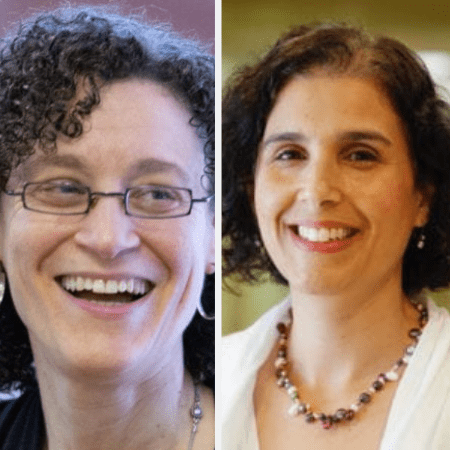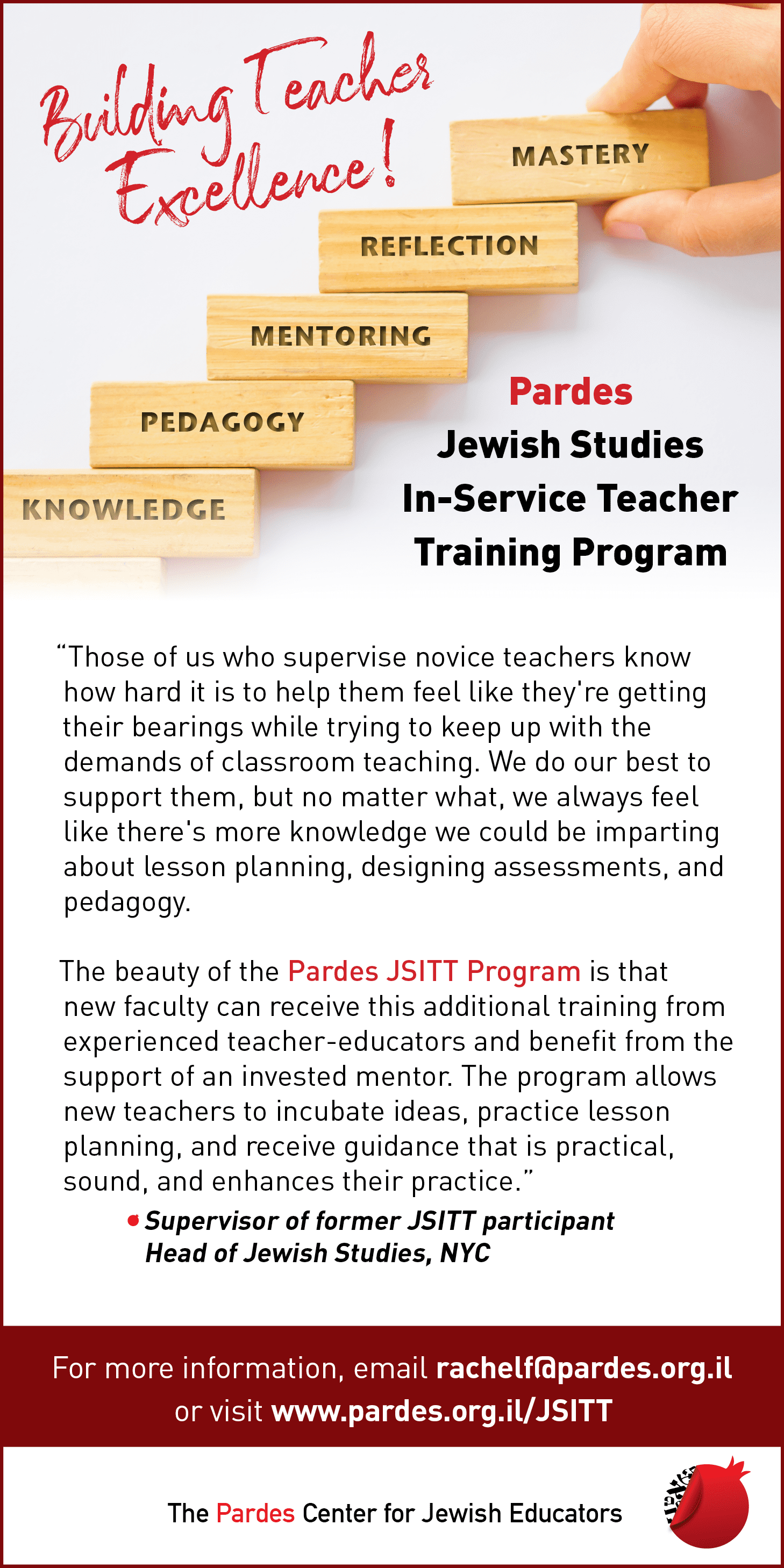A Question of Inheritance: Teaching Torah Through Children’s Questions
Contemporary educational research supports this idea, highlighting the multiple ways in which student question-asking is central to deeper learning. Importantly, question-asking makes students active participants in generating knowledge and has been shown to increase comprehension (see, for example, How People Learn). Question-asking can be intrinsically motivating, as it builds on children’s curiosity and inclination to solve problems and allows them to begin to develop “wonderful ideas” (Duckworth). One might even argue that question-asking is a core skill of Jewish life and learning; almost every good devar Torah starts with a good question. Furthermore, question-asking brings questioners into a relationship with the Torah text that they are trying to understand.
Asking a question requires many things from a learner. It requires paying attention to the text, trying to make sense of it, and noticing what we don’t understand or what is ambiguous and brimming with possible meanings. It is realizing that in a way, the text wants our questions; our questions matter to the text, and this text matters to us. For all of these reasons, we need to make student question-asking a more central feature of Jewish learning in the classroom, while also attending to both knowledge and skill development.
Imagine a fourth-grade classroom where students are learning the story of Yosef and his brothers in Bereishit 42. The teacher asks them to translate a number of verses with the help of a word list. Some students find this easy to do and quickly finish the assignment. Others find translating hard or uninteresting and take the opportunity to goof off. The teacher tells the students who have finished translating to answer a worksheet of questions about the peshat, contextual or plain meaning of the text. As students work, sometimes a student asks a question about the narrative. For example, one student wonders what Yosef is feeling when he first meets his brothers in Egypt. Their teacher lets them know that it is an interesting question and that they will see in a few days what Rashi has to say about this. They shift from translating to answering questions that the teacher has in the curriculum. Midweek, students study a few key commentaries by Rashi, working on them together as a class and then answering questions about them. At the end of class, the teacher brings up one of the questions that a student had asked earlier in the week; they discuss it briefly, and they run out of time. The week ends with a discussion that personalizes a theme emerging from the narrative—sibling conflict and reconciliation—and how students have handled it when they have been hurt by their own siblings.
The teacher recounts the week to a colleague, who marvels at how thoroughly the teacher was able to teach the material. The teacher says, “Thanks, but it still feels like I’m missing something, I just can’t put my finger on it…”
Imagine the same classroom but in this scenario the teacher has been working throughout the year with students on the skill of asking deep, text-based questions through the Pedagogy of Partnership (PoP), our approach to Jewish learning. In this class, students have time to work on both translating the text and exploring questions—big and small—that the text raises for them. As students work to translate verses in Chapter 42 and learn new key words and conventions, they are also charged with keeping track of questions that they raise, which are a valued part of their work. They write these questions down alongside their translation work. The act of translating is itself framed as an activity that will help them “listen to the text” to find clues to help them answer their questions.
As students work through the text, some ask how the brothers didn’t recognize Yosef if he knew who they were, and why Yosef kept his identity a secret. Another student asks whether Yosef still feels Jewish. Students share their questions with the whole class so the teacher can write them down on the big board for all to see and consider. The teacher promises that as they keep studying and expand their learning from the Torah text to commentators, they will find clues to help them think about responses to their questions.
One quiet student who usually has a hard time translating pipes up to wonder whether Yosef still loves his brothers. He notices that the Torah tells us multiple times that Yosef recognizes his brothers and that at the same time, Yosef speaks harshly to them and does not initially reveal himself to them. The student is not sure what to make of this. His classmates get excited by this question too, and as they keep working on new verses, many look for clues that might help them think this through. Students also keep track of questions for which they see clear answers in the text, such as: How many brothers went down to Egypt at the beginning of Chapter 42? How does the Torah describe Yosef when the brothers first meet him? And, which brother needs to stay behind in Egypt?
At the end of the week, the teacher gives students back their questions to discuss with each other. Students can choose a number of questions from the peshat list, for which they know they can find clear answers in the text in front of them. Students can also choose one question from the interpretive list, for which they know there may be multiple answers, but their answers need to be backed up with evidence from the text. They work through their questions together. Their teacher listens in on their discussions, probing their responses to help support them more fully and when needed, turning their attention to particular parts of the text in front of them. When they gather as a full class, the teacher excitedly calls on them to share their ideas and uses the opportunity to introduce additional midrashim and commentaries that have taken up the same questions, often tying in other sources that they had tapped to come to their conclusions.
In both classroom scenes, students covered the same content and worked on the same translation skills. However, their understanding of the purpose of their learning and their roles in the learning are different. In the first classroom, students understand that it is their job to translate, understand the peshat, and look to Rashi to answer any questions they might have. In the second, students understand that Torah learning encourages their questions and that it is their job as Torah learners to ask questions and pursue them—that this is how they make meaning of Torah. They understand that their translation work and/or understanding of the peshat of the content is what enables them to ask and answer questions. Students even understand that there are different kinds of questions that they can ask to make sense of the text, wonder about its big ideas and possible meanings, and connect personally to it. They understand that rabbis have been asking questions about the Torah for a very long time and that they should learn from what the rabbis have said as well as contribute to this larger conversation.
In the second scenario, students are driving their learning, steering toward goals of Jewish education even more strongly than they might in a standard classroom. The students still learn the core curriculum, the Torah text, midrash, and commentaries, but take greater ownership of it and build an even greater bond with the Torah by seeing their curiosity reflected in the questions of commentators throughout the ages. Students still learn the skill of translating, but also learn and practice skills for identifying and answering their questions. By asking and working on their questions, they learn additional skills, those of textual exegesis or interpretation. When the teacher asks students to exhibit this broader range of skills, the teacher creates opportunities for learners with different kinds of abilities to shine, enlarging what it means to be a “good Torah student” beyond just those who can read, translate, and recall facts well. Finally, students’ meaning-making is deeply grounded in the Torah itself and is not a parallel conversation about a theme raised in Torah that inadvertently leaves Torah behind. In this class, students make meaning by digging deeply into the text and grounding their questions of how it applies to them in that substantive content.
The difference between these two classrooms is not just one of technique or emphasis but is a matter of culture and beliefs. To encourage student questions requires that students be treated as thinkers and contributors even at young ages. It requires educators to be truly interested in the questions that students raise and accordingly give students time to ask and pursue their own questions.
When teachers do so, the effects can be profound. As one educator, trained in the PoP approach to Jewish learning, wrote,
Student engagement has skyrocketed as students take ownership of their inquiry… I have been amazed to see students who struggle with translation demonstrate insider knowledge of how Jewish interpretation works. In a discussion of whether Lavan planned to trick Yaakov into marrying Leah from the start, one such student posited that Lavan did in fact make this plan early on. As evidence for her interpretation, she pointed out that Lavan told Yaakov that he would give “her” to him (Genesis 29:19) rather than stating Rachel’s name outright. She derived that Lavan chose to refer to “her” rather than state Rachel’s name because in his mind, Lavan was referring to Leah. This student taught our class an exegetical tool that was then harnessed by her classmates in other discussions—in Torah study it is noteworthy if the name of a character is mentioned outright or whether they are referred to by a pronoun.
We often hear concern from educators that if we let students lead, the learning may not be serious. The irony is that when we let students lead with their questions and help them learn how to ask and pursue deep questions, it often makes the learning both more serious and more meaningful. We cannot separate knowledge, skills, and meaning-making but must integrate these domains by putting children’s questions at the center to help ensure that all of our children have the opportunity to receive Torah as their yerushah.
For further resources about this approach, see this Torah learning protocol to support students to notice details in the text and ask questions.






